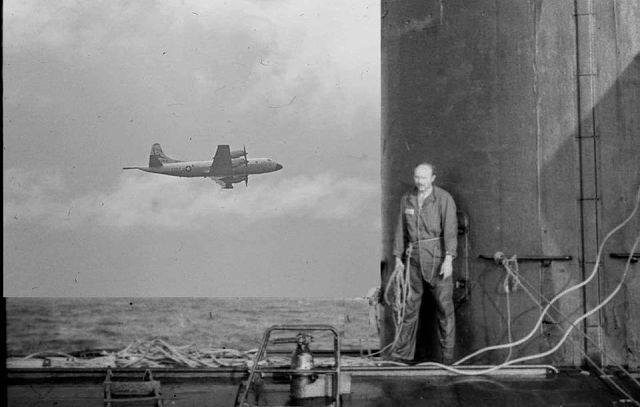78 years ago today—at 5:29:45 AM (Mountain War Time)—about 35 miles SE of Socorro, New Mexico, the nuclear age began with a big bang. Contrary to popular belief, the area surrounding the remote Trinity test site was not uninhabited, and the fallout did not drift away harmlessly.








In fact, some 40,000 people lived in the vicinity. Manhattan Project scientists methodically tracked the radioactive cloud from that first test (left). The Los Alamos Historical Document Retrieval and Assessment Project created a more recent graphic (right) using the same data.




In 2021, scientists at Los Alamos reassessed the yield of the Trinity test using high-precision mass spectrometry and found the actual yield was 24.8 ± 2 kilotons, significantly larger than the longtime accepted value of 21 kilotons. https://t.co/uQfpbnFu29tandfonline.com/doi/pdf/10.108…


Although ignored for decades, Trinity’s radioactive fallout had significant immediate and long-term consequences. This @BulletinAtomic article reveals evidence of a dramatic increase in infant mortality in the downwind region in the months after the test. thebulletin.org/2019/07/trinit…
@BulletinAtomic Lacking familiar objects in the frame, it’s very difficult to gauge how large the Trinity explosion was in photos or films. Fortunately, @wellerstein created this composite image which stacks photos at a consistent scale and includes the Empire State Building as a reference. 

@BulletinAtomic @wellerstein In 2019, @atomcentral released stunning, restored black-and-white HD footage of the Trinity test, which was conducted in New Mexico’s aptly-named Jornada del Muerto desert. The cleaned-up film reveals a remarkable amount of detail previously unseen.
@BulletinAtomic @wellerstein @atomcentral Also via @atomcentral is this extremely rare view of the Trinity test from a 16-mm high-speed Eastman camera shooting through a prism. As filmmaker Peter Kuran notes, “it displays some interesting anomalies not seen in other footage of the Trinity test.”
@BulletinAtomic @wellerstein @atomcentral Those present at Trinity had a variety of reactions. Los Alamos director Robert Oppenheimer famously quoted the Bhagavad Gita: “Now I am become Death, the destroyer of worlds.” Physicist Kenneth Bainbridge, the test director, was more blunt: “Now we are all sons of bitches.”




@BulletinAtomic @wellerstein @atomcentral On September 9, 1945, General Leslie Groves, the military director of the Manhattan Project, opened up the Trinity site to journalists in order to refute disturbing reports coming from Hiroshima and Nagasaki of deadly radiation-caused illnesses. 

@BulletinAtomic @wellerstein @atomcentral At one point, Groves ordered Patrick Stout, a 29-year-old Army counterintelligence agent and his driver, to join him at ground zero to prove it was safe. Stout—who also witnessed the Trinity test—remained there for 30 minutes. He became severely ill with leukemia 22 years later. 

@BulletinAtomic @wellerstein @atomcentral A medical expert at Stout’s military disability compensation appeal estimated his total exposure at nearly 100 roentgens (the crews of two lead-lined tanks sent into the crater several times to collect soil samples the day of the test received 7-15 roentgens). Stout died in 1969. 

@BulletinAtomic @wellerstein @atomcentral There is only one in-focus, properly-exposed, color photograph of the Trinity test fireball. It was taken with this camera by Jack Aeby, a 21-year-old civilian Manhattan Project employee based at Los Alamos who was not a professional photographer.




@BulletinAtomic @wellerstein @atomcentral In a 2003 interview, Aeby discussed the making of that historic photograph: https://t.co/Wngu8i49vbahf.nuclearmuseum.org/voices/oral-hi…




Radioactive fallout from the Trinity test drifted across the country, but the government never alerted people to the danger. Some of it fell into rivers in Indiana and Iowa, contaminating the strawboard Kodak used to package its X-ray film and ruining it. popularmechanics.com/science/energy…
When the same problem occurred after the first test in Nevada in early 1951, Kodak threatened to sue the gov’t. In response, the Atomic Energy Commission offered to alert Kodak before each future test and provide classified daily maps showing areas of potentially heavy fallout.




A Kodak executive and personnel at other film companies were issued “Q” clearances to receive and use this secret information to ensure their company’s products were not harmed by radioactive fallout. By contrast, the AEC consistently lied to the public about fallout’s dangers.
@cmx11 @GrouchoG @Julian701776140 The actual order to use the A-bombs was given by Acting Army Chief of Staff Gen. Thomas Handy to Gen. Carl Spaatz, commander of US Army Strategic Air Forces on July 25, 1945. Army Chief of Staff Gen. George C. Marshall and Secretary of War Henry L. Stimson approved the order. 

• • •
Missing some Tweet in this thread? You can try to
force a refresh



























